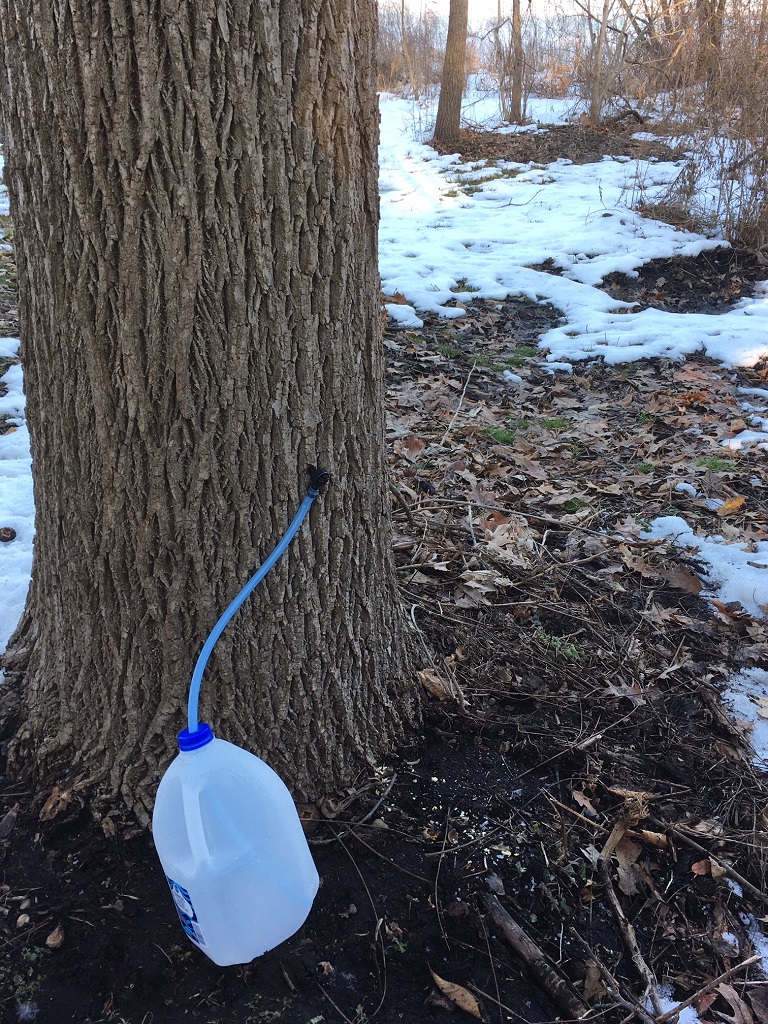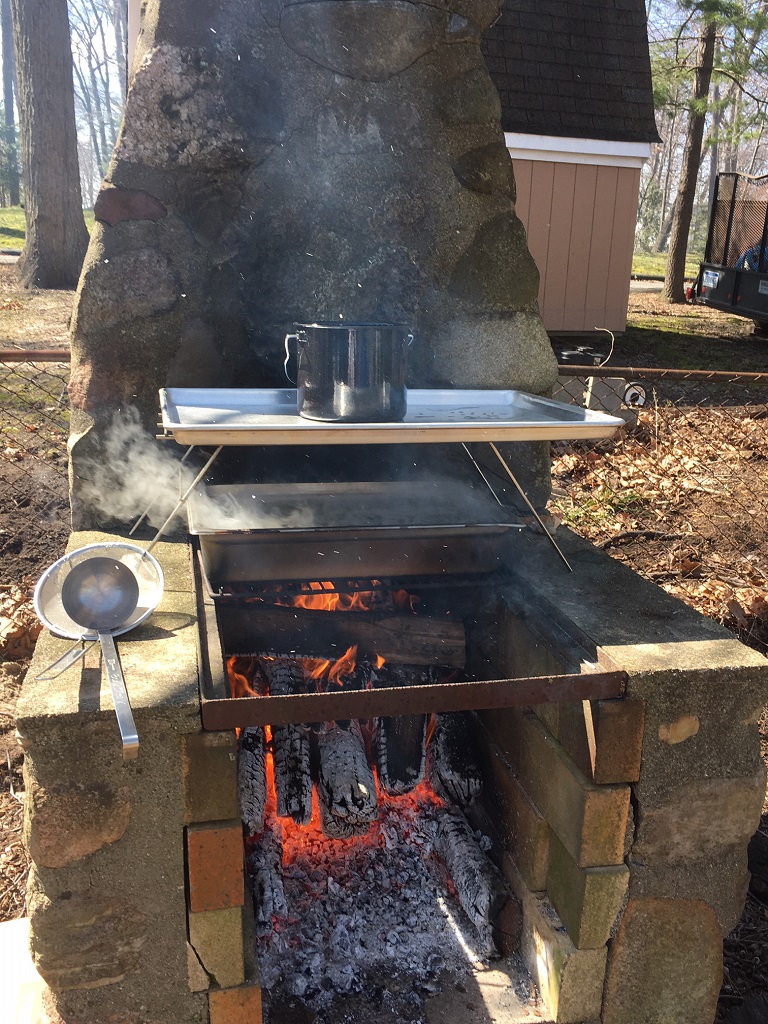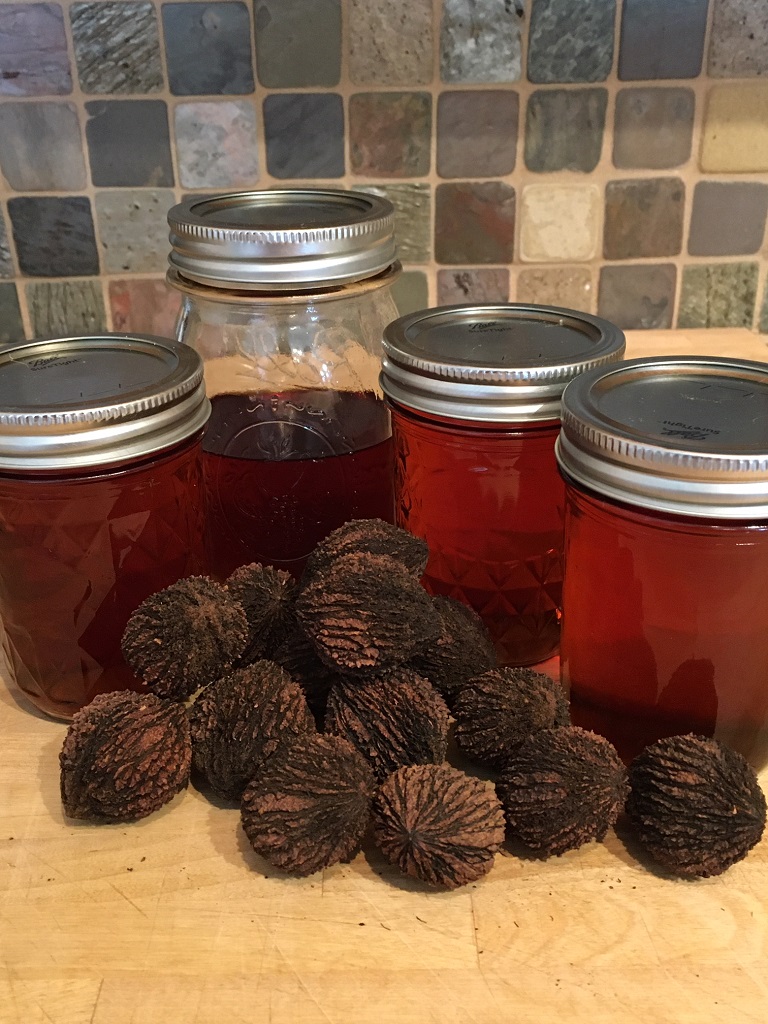My right boot is stuck in the mud up to the ankle. It makes a sucking sound as I pull it out, wobbling on one leg while looking for a drier spot. I’m heading into the woods to check on the taps I pounded into the black walnut trees. Earlier this year, I was inspired by the guys at Dixboro Pure. But without maples, I thought I was out of luck. Then I learned you can make syrup from the sap of nearly 30 tree varieties, including black walnut, birch and box elder.

Black walnuts are beloved by the furniture and building industries but hated by homeowners. In the fall, they drop greenish yellow pods the size of tennis balls onto cars, sidewalks and lawns, leaving inky black stains as they decompose. At the center of the pod is the walnut, one of the toughest nuts to crack. Some people say they drive over them with a truck to split them open. After processing and drying, the meats have a nutty, almost boozy flavor.
The syrup doesn’t come easy, either. It can take up to 60 gallons of sap to get one gallon of syrup, compared to a 40-to-one ratio for maple. The yield per tree is also less, which is why there’s not much commercial production of black walnut syrup in the United States.
The sap runs when daytime temperatures are in the 40s and nights are below freezing. Most mornings, I find a small chunk of frozen sap rattling around inside the jug. After five weeks, I have a little more than eight gallons of sap from six trees. The weather’s warming and buds are starting to appear, signaling the end of the season.

I pull the taps, stoke the fire and start the boil. It’s a one-pan operation, with wisps of steam gliding over the surface and disappearing into the sky. I replenish the pan with frozen sap collected earlier in the season and watch as it gradually evaporates. The wood pops and sends bright sparks into the air, the smoke gently mingling with the steam. Slowly, the crystal-clear sap takes on a yellow hue, then deepens to amber. I pull it off the fire after eight hours of boiling, when it reluctantly drips from the spoon.
The long journey from forest to flame to fork is over, with only a few breakfasts’ worth to show for it. The taste? Sweet, nutty, buttery.
Liquid gold, indeed!


Fantastic! I applaud your patience; this sounds like such a production. But clearly one that was worth it!
You learn something new everyday. I so enjoyed this short story about a lot of work!! Have to try this syrup sometime 😋.